Comments / Questions (18)
![]() Maya wrote:
Maya wrote:
I may just be missing it, but I don't see anywhere where it says how many skeins of yarn to us of the Polaris. Pls help. Thank you
15.10.2019 - 21:59DROPS Design answered:
Dear Maya, you can find yarn amount next to the picture, on the right. For this pattern, you'll need 1000-1100-1300 g , colour 06, light beige of aPolaris, according to the different sizes. Happy crafting!
15.10.2019 - 22:10
![]() Helena wrote:
Helena wrote:
En ymmärrä mitä tarkoitetaan, kun ohjeessa lukee, että lisätyillä silmukoilla neulotaan joustinneuletta, kun lisättyjä silmukoita on 4. Ja eikö keskimmäisen silmukan tulisi olla oikea s? Ohjeessa on joustinneule-vinkki, joka käskee neuloa joka 5. kerroksen oikein. Toimiiko tämä myös vasenkätisille?
06.10.2019 - 09:21DROPS Design answered:
Hei, keskimmäinen silmukka on aina oikea silmukka, tämän silmukan molemmin puolin neulotaan joustinneuletta, eli ensimmäisellä lisätyllä silmukalla neulotaan oikeaa, 2 seuraavalla lisätyllä silmukalla neulotaan nurjaa jne.
18.12.2019 - 17:04
![]() Lene Bang wrote:
Lene Bang wrote:
Det ville være fint om opskriften angav hvor meget garn der går til hætten. Ellers en fed opskrift
22.08.2019 - 12:17
![]() Sarah wrote:
Sarah wrote:
Ich bin jetzt soweit fertig mit dem "Körper". Ich bin ziemlich groß, deswegen hab ich noch einige Runden mehr gestrickt, passt ganz gut:) Jetzt habe ich noch 1,5 Knäuel Wolle übrig. Reicht das für die Kapuze? Wie viel Wolle brauche ich noch dafür? Imsgesamt ein sehr schöner Poncho, ich freue mich schon den im Herbst/Winter tragen zu können:)
29.06.2019 - 19:02DROPS Design answered:
Liebe Sarah, leider haben wir nur die gesamte Garnmenge für die gegebene Maßen, gerne können Sie Kontakt mit Ihrem Laden auf - auch telefonisch oder per E-mail, sie werden Ihnen gerne wal weiterhelfen. Viel Spaß beim stricken!
01.07.2019 - 07:00Cinzia wrote:
I have the same problem Anna has. I cannot keep the rib pattern by increasing 4 stitches. Anna, did you resolve it? Sorry I am not an expert. What am I missing ?
18.03.2017 - 22:52DROPS Design answered:
Dear Cinzia, you have to work the inc sts in rib as before so that the rib will continue as before and you should always keep K1/P2. Mid st is a K st, on 1st inc, you will have to work the YOs K, then on next 2 inc work the YOs P (= you will have P2, K1, P2, mid st K, P2, K1, P2) and continue this way. Happy knitting!
20.03.2017 - 09:36
![]() Anna wrote:
Anna wrote:
Hello, I'm having a bit of trouble keeping the rib aligned, because the rib pattern is 3 stitches, while we increase by 4 every inc row. So the stitches with the markers don't stay K. Also, am I supposed to K/P the inc stitches the same every time? (K,PP,K). Thank you!
14.11.2016 - 17:30DROPS Design answered:
Dear Anna, correct, inc sts on each side of the middle st on mid front and mid back should be worked in rib so that rib patterns continues. Happy knitting!
15.11.2016 - 09:04
![]() Regina Reifferscheid wrote:
Regina Reifferscheid wrote:
Frage: Wie stricke ich GENAU das Rippenmuster bei den Zugaben? Komme nicht klar! Die markierte vordere und hintere Masche wird doch IMMER rechts gestrickt, oder und wie bringe ich da die Reihenfolge 1M re/ 2M li ein? Ich verstehe auch nicht, das nach jeder 5 Rippenmuster Rd, 1Rd. rechts gestrickt wird, da ich es auf dem Bild absolut nicht erkennen kann! Diese Anleitung ist leider sehr unübersichtlich. Würde mich sehr über eine genaue Erläuterung freuen ! Viele Grüße
03.10.2016 - 16:03DROPS Design answered:
Liebe Frau Reifferscheid, Sie müssen die Bündchen so stricken: 1 M re/2 M li über die 9-9-12 ersten M, dann 1 M re (= Markierer), 2 M li/1 M re über die nächsten 17-17-23 M, 1 M re (= Markierer), 2 M li/1 M re über die letzten 8-8-11 M. Dann jede 5. Rd muss man 1 Rd re stricken so dass die Bündchen nicht so "eng" sind (so sichtlich ist es auch nicht).
03.10.2016 - 16:54
![]() Celia wrote:
Celia wrote:
¿Para tallas grandes xxl, como puedo sacar el patrón?es la primera vez que voy ha hacer uno y no se calcularlo. Si me resolvieran esta duda, estaría muy agradecida. Gracias y un saludo.
13.08.2016 - 19:26DROPS Design answered:
Hola Celia, para la talla XXL tienes que mirar el último de los números cuando te indican los puntos que debes hacer. Por ejemplo, 36-36-38, tendrías que hacer el 38. Sin embargo si hay solo un número, ese es para todas las tallas.
14.08.2016 - 11:59
Earthling |
|
|
|
|
Knitted DROPS poncho with hood and fringes, worked top down in ”Polaris”. Size: S - XXXL.
DROPS Extra 0-1221 |
|
|
INCREASE TIP: Inc 1 st on each side of st with marker Inc by making 1 YO - work YOs into rib. RIB TIP: To avoid the rib contracting the piece K 1 round over all sts after every 5th round with rib (adjust so that this is a round without inc). GARTER ST (back and forth): K all rows. 1 ridge = 2 rows K. FRINGE TIP: To make the fringes hang nicely on garment they should be moistened, shaken and dried before they are tied on. TIP FOR CHANGING YARN: When switching ball with Polaris, split the old strand in two on the last 15 cm – cut off one part, do the same on the new strand. Place the first and last 15 cm on top of each other so that the yarn is the normal thickness and continue to work – this is done to make the strand switch invisible in the yarn. ---------------------------------------------------------- PONCHO: Worked in the round on circular needle from top down. Cast on 36-36-48 sts on circular needle size 15 mm with Polaris. P 1 round, K 1 round, P 1 round and K 2 round. Insert 1 marker in 10th-10th-13th and in 28th-28th-37th st on needle (= mid front and mid back). Work rib (= K 1/P 2) on round and inc 1 st on each side of K st with marker mid front and mid back – READ INCREASE TIP (= 4 sts inc). Continue rib - READ RIB TIP and repeat inc every other round - NOTE: Work the inc sts into rib, i.e. work the first K, work the next 2 P, work the next K and work the next 2 P etc. REMEMBER THE KNITTING TENSION AND READ TIP FOR CHANGING YARN. When poncho measures approx. 50-52-54 cm from neck (measures along mid front), K 1 round over all sts (inc mid front and mid back as before). P 1 round and then LOOSELY cast off with K while AT THE SAME TIME inc mid front and mid back as before (cast off the inc sts as regular sts). HOOD: Beg from RS mid front after st with marker and pick up 1 st in every st around the neck on circular needle size 15 mm with Polaris (do not work in st with marker mid front) = 35-35-47 sts on needle. K 3 rows back and forth and inc 5 sts evenly on 2nd row (= from RS) = 40-40-52 sts. Then work in stocking st with 2 sts in GARTER ST - see explanation above, in each side towards mid front until hood measures approx. 36-37-38 cm. Loosely cast off and sew hood tog at the top with grafting/kitchener sts. FRINGES: Fasten fringes in every other st along cast-off edge on poncho as follows - READ FRINGE TIP. Cut 1 strand Polaris of 40 cm, fold it double and pull the loop through a st and then pull yarn ends through the loop. |
|
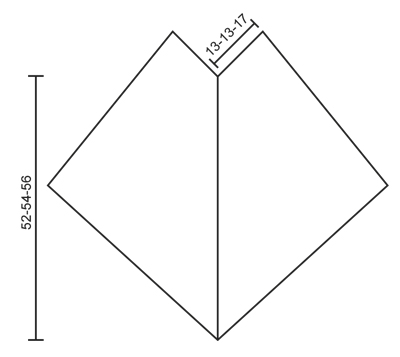 |
|
Have you finished this pattern?Tag your pictures with #dropspattern or submit them to the #dropsfan gallery. Do you need help with this pattern?You'll find 19 tutorial videos, a Comments/Questions area and more by visiting the pattern on garnstudio.com. © 1982-2025 DROPS Design A/S. We reserve all rights. This document, including all its sub-sections, has copyrights. Read more about what you can do with our patterns at the bottom of each pattern on our site. |







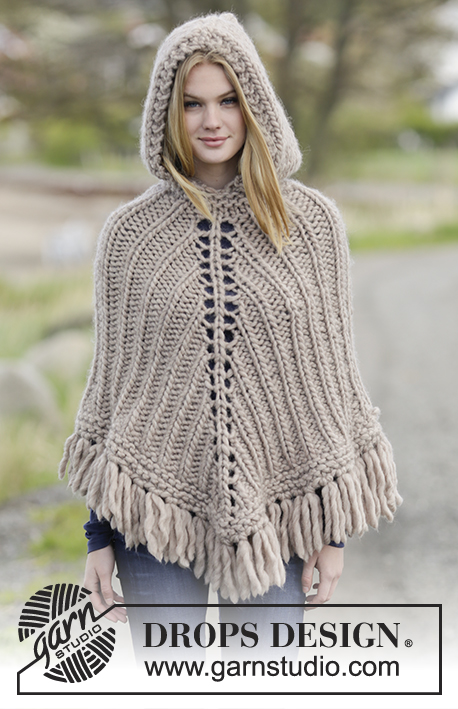
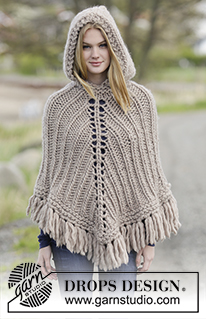



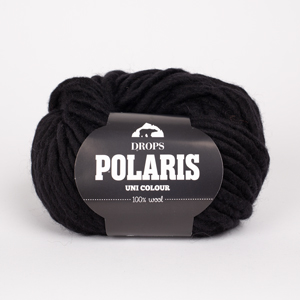
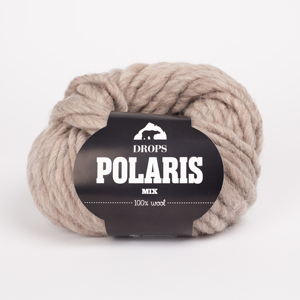


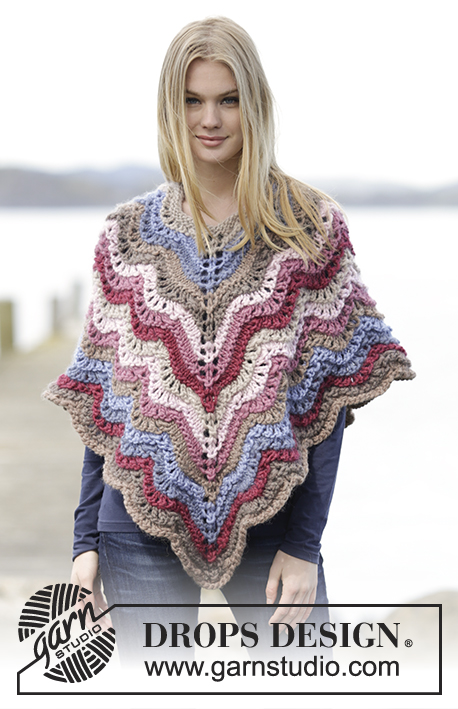
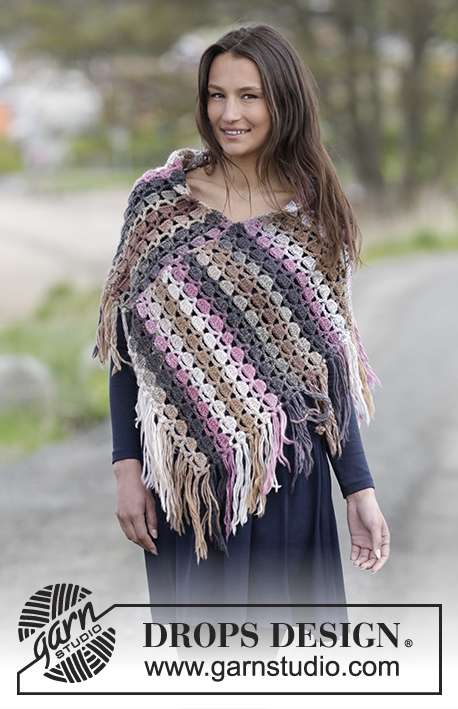
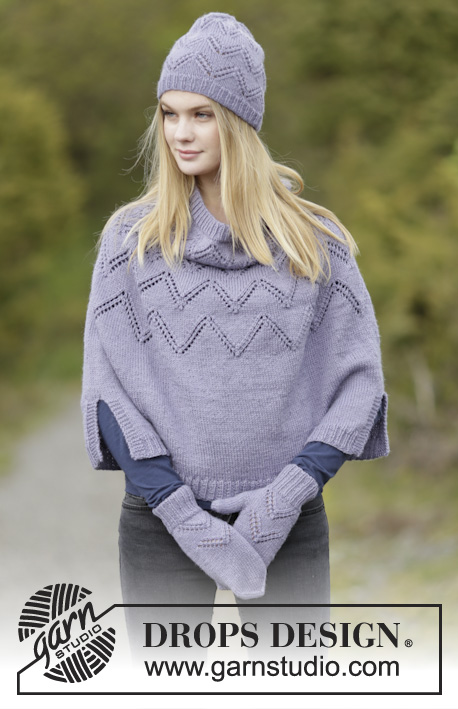



































Post a comment to pattern DROPS Extra 0-1221
We would love to hear what you have to say about this pattern!
If you want to leave a question, please make sure you select the correct category in the form below, to speed up the answering process. Required fields are marked *.